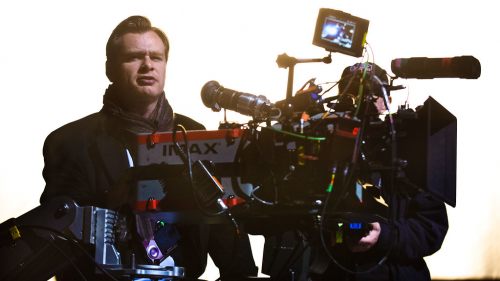IMAX Is Moving Away From 3D
Have you ever wanted to watch a movie in good old-fashioned two dimensions, with light creating the illusion of depth like it has for over a century in cinema (and for far longer in paintings), only to find that 3D is your only option? Well, IMAX hears you.
A report from The Wrap tells us what has essentially been inevitable, in that ticket buyers have been shelling out those extra monies less and less for 3D showings. In contrast, Christopher Nolan’s Dunkirk earned about a quarter of its revenue from IMAX screenings despite not needing glasses to watch it. Fancy that!
Don’t take my word for it though, here’s what IMAX Entertainment CEO Greg Foster had to say:
“It’s worth noting Dunkirk as showing exclusively in 2D, which consumers have shown a strong preference for.”
“We’re looking forward to playing fewer 3D versions of films and more 2D versions.”
Dunkirk isn’t the only film that factors into this decision of course. Per The Wrap, IMAX were disappointed with their second-quarter earnings, and the MPAA also reported an 8% drop in 3D attendance in the United States last year.
3D, like any technology or cinematic language, can absolutely work if it’s applied well. There’s a reason Avatar started the trend (other than increased ticket costs), because for a brief period in late 2009/early 2010, 3D become synonymous with “immersion,” though that might be a slight misuse of the term. A number of films have used 3D to great effect since: Alfonso Cuaron’s Gravity, Martin Scorsese’s Hugo, Jean-Luc Godard's Goodbye to Language and, of course, Jackass 3D. But films where 3D is an integral part of the experience are far and few apart, and most Hollywood productions that are projected in 3D tend not to be filmed as such.
Outside of what it does for CGI in both live action and animation, 3D post-conversion has rarely added anything to a filmed experience (blasphemous as it might sound, The Wizard of Oz re-release was a surprising exception!), and even in the cases of the aforementioned films, Goodbye to Language and Jackass 3D are still perhaps the best modern examples of great 3D, wherein the format is relatively inseparable from the storytelling… and they call attention to it constantly. Yes, Godard and Jackass belong in that sentence together, and even the “immersion” of Avatar involved actively noticing what, at the time, was a brand new kind of cinema.
All that said however, 3D has never been integral to the big-screen, surround-sound IMAX experience unless a film was specifically designed to be seen that way (Gravity, Avatar, and to an extent Pacific Rim) and while I’m sure there are films I’m forgetting, the 3D-specific experiences will no doubt continue as and when they arrive. As for your average Hollywood tent pole? Probably not! Why pay extra for something that’s just as good without a pair of glasses taking the brightness down a notch*? Besides, for every person who doesn't mind the format, there's someone who complains about literal headaches since 3D constantly forces your eyes to adjust focus.
Look, 3D probably isn’t going anywhere as a whole. It’s been around since 1922, and its current form is a pretty normal part of the movie landscape given that theatres can charge more. But it sure would be nice to have more of an option to avoid it when it feels unnecessary.
*How so many digital projectionists still don’t adjust for this in 2017 is something I’ll never understand.
Image used with permission from Wikimedia Commons.



